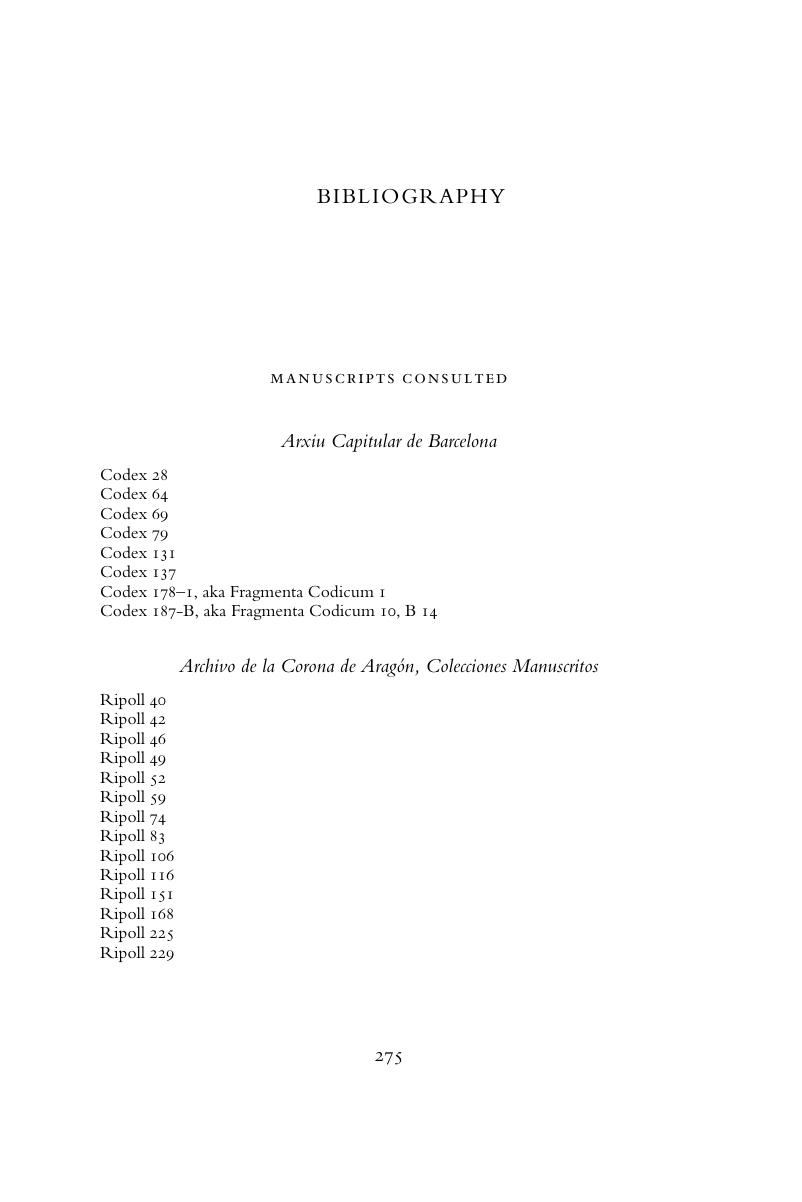Book contents
- Carolingian Catalonia
- Cambridge Studies in Medieval Life and Thought Fourth series
- Carolingian Catalonia
- Copyright page
- Dedication
- Contents
- Acknowledgements
- Abbreviations
- Maps
- Introduction
- Chapter 1 Gothic Catalonia and Septimania to 778
- Chapter 2 Creating the Spanish March, 778–840
- Chapter 3 March and Monarchy, 840–878
- Chapter 4 Counts, Church, and Kings, 877–947
- Chapter 5 Learned Culture in Carolingian Catalonia
- Chapter 6 The March towards Sovereignty? (947–988)
- Conclusion
- Bibliography
- Index
- References
Bibliography
Published online by Cambridge University Press: 28 December 2018
- Carolingian Catalonia
- Cambridge Studies in Medieval Life and Thought Fourth series
- Carolingian Catalonia
- Copyright page
- Dedication
- Contents
- Acknowledgements
- Abbreviations
- Maps
- Introduction
- Chapter 1 Gothic Catalonia and Septimania to 778
- Chapter 2 Creating the Spanish March, 778–840
- Chapter 3 March and Monarchy, 840–878
- Chapter 4 Counts, Church, and Kings, 877–947
- Chapter 5 Learned Culture in Carolingian Catalonia
- Chapter 6 The March towards Sovereignty? (947–988)
- Conclusion
- Bibliography
- Index
- References
Summary

- Type
- Chapter
- Information
- Carolingian CataloniaPolitics, Culture, and Identity in an Imperial Province, 778–987, pp. 275 - 314Publisher: Cambridge University PressPrint publication year: 2019

